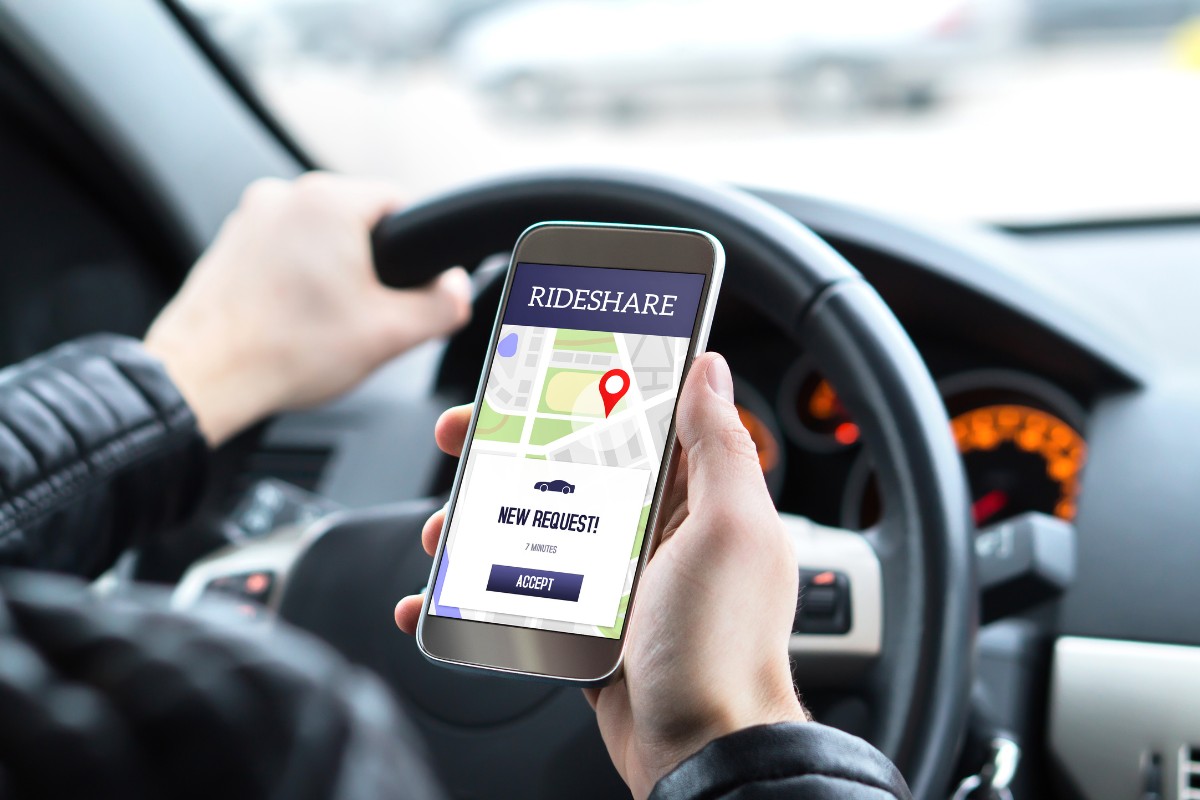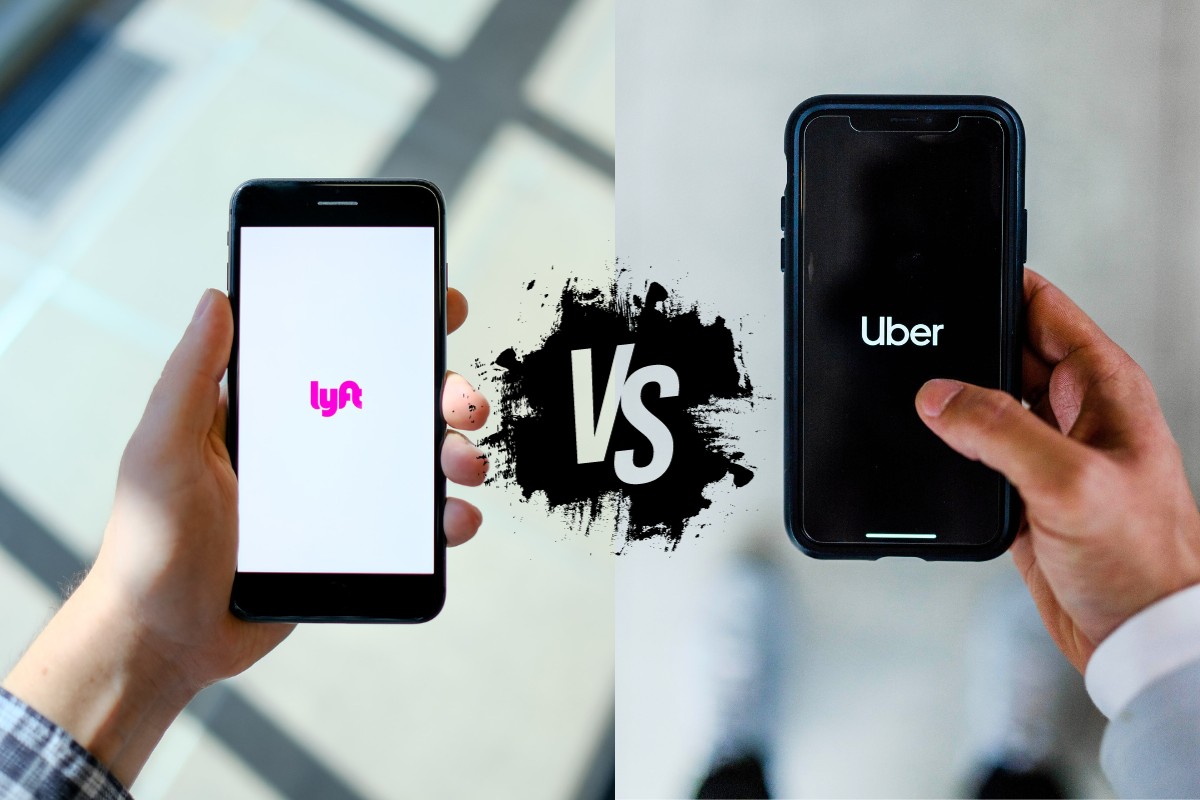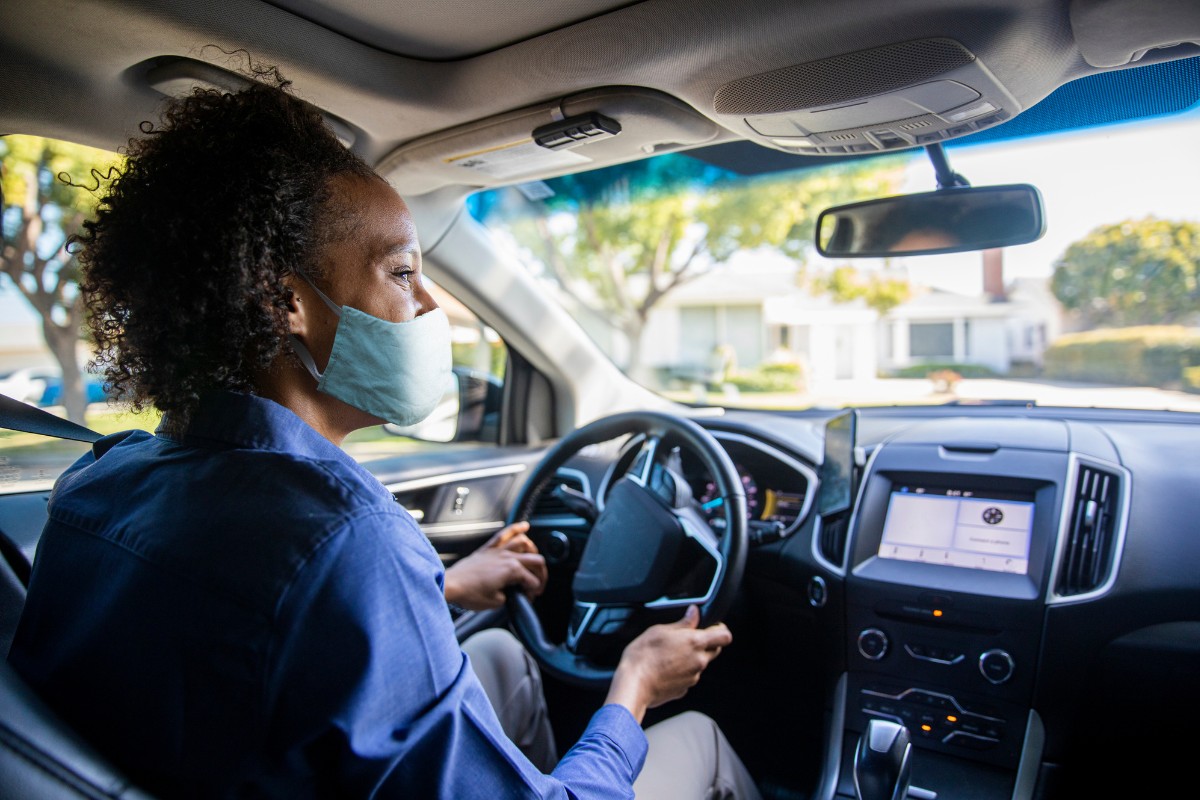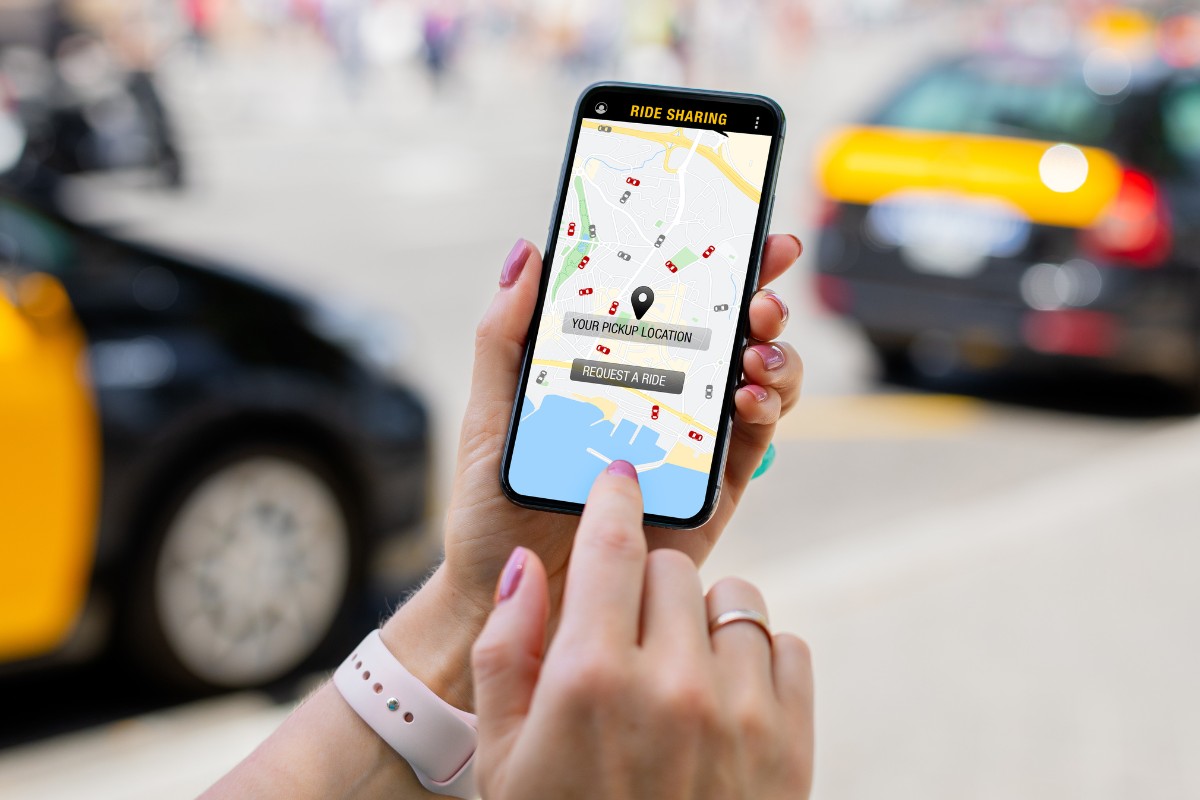Now that the market has been in action for quite a few years, there are plenty of ridesharing industry statistics we can review.
With taxis dominating this space for decades, ridesharing services like Uber and Lyft changed the entire scope of this industry.
As of 2022, the ridesharing market, from a global standpoint, is valued at $95.09 billion.
Make no mistake, the market is massive, and ridesharing is something the public has happily adopted over the years.
It’s important to acknowledge the ridesharing market comes with its own variety of downsides, just like any other industry.
Working through the pros and cons has led to some controversy, but it’s pretty apparent the ridesharing industry continues to enjoy ample success regardless.
Keep reading through this article to learn more about ridesharing industry statistics, as they’ll provide a direct look at the sheer size and influence of the market.
Post Contents
Key Statistics
- 36% of people in the United States have used a ridesharing app
- 26% of ridesharing app users make use of the services every month
- It’s projected that the ridesharing market will reach $185.1 billion by 2026
- Uber dominates the U.S. rideshare market, boasting 71% of all sales
- The global rideshare market is expected to grow by over 133% between 2022 and 2028
- Market value is expected to reach $226 billion by 2028
- Lyft reported losses of $1.8 billion in 2020 due to Covid-19
- Bikes and bicycles are projected to be the largest and fastest-growing segment in ridesharing
- New York is the most expensive for ridesharing, averaging $18.73 for every trip
RideSharing Industry Statistics: The Need to Know

With the benefit of operating a customer-to-customer business model, services like Uber and Lyft have found rapid success.
Whereas plenty of people are happy to make money giving rides with their own cars, there’s always an endless list of people who need rides.
It’s an ecosystem that feeds itself and has quickly reshaped how ridesharing is seen for the foreseeable future.
The market has been around long enough to provide actionable data on what’s popular, what works, and how people have responded to the service.
It’s important to highlight that ridesharing companies don’t have to follow the same regulations that taxi companies do.
This comes with more than one advantage.
The statistics in this article will show you exactly why the ridesharing market has completely overshadowed traditional taxi rides.
1. Frequency of Rideshares in the U.S.
Although many people use ridesharing apps on a consistent basis, it’s actually more common for it to be less common for the majority of users.
You’ll find that ridesharing is always more successful and warranted in urban environments, but some cities prove to be much more active than others.
Below is a brief look at the frequency of rideshares in the United States:
- Daily or weekly = 17%
- Monthly = 26%
- Not as often = 56%
Ride sharing services are great when you’re in a pinch.
When you couple the convenience of smartphone applications, millions of people don’t see the point of calling a taxi anymore.
Surprisingly, the taxi industry is still alive but has essentially been thwarted by what ridesharing has accomplished.
It’s safe to say the rideshare market is in a very safe position, as it isn’t hurting on revenue.
Even with the effects of the pandemic, those losses are minimal to the grand scheme of the industry.
(Zippia)
2. Sales Are on an Upward Trajectory
Taking a look at data over recent years, 2021 was good for the ride sharing industry.
Seeing an increase of 50% from the year prior, the ridesharing market brought in $117 billion in sales for 2021.
A large part of this comes from the world slowly opening back up after the height of Covid slowing down.
With a positive track record of revenue, many experts are confident that the ridesharing industry will continue to see increased revenue with each passing year.
Of course, ridesharing services are much more popular in certain parts of the world compared to others.
For example, there are many countries where it isn’t common for most residents to have their own cars.
Although public transportation exists, ridesharing services have proven to be much more convenient in many circumstances.
(Zippia)
3. Ridesharings’ Contribution to Vehicle Miles Traveled (VMT)

In the United States, there’s a statistic that keeps track of the vehicle miles traveled (VMT).
You might be surprised to learn that Uber and Lyft account for 6% of VMT in the United States.
There’s a good chance that this percentage will increase over time as urban environments become more congested.
This data point is up from 1%, which was only back in 2016.
It may not seem like a huge difference, but it’s much more substantial on a nationwide scale.
More people are getting accustomed to ridesharing and the convenience it offers.
One might argue that it can be costly at times, but some people would rather be a passenger than deal with traffic in city environments.
This leads to the next statistic, which focuses on the most expensive city for ridesharing services in the U.S.
(Zippia)
4. Which City in the U.S. is the Most Expensive for Ridesharing?
For those who live in the United States, some of this information may not come as a surprise at all.
Based on data taken from 2019, the most expensive city in the U.S. for ridesharing services is New York.
There isn’t much curiosity behind this statement, as New York is known to be the most expensive for a lot of things.
If you look at it from the other side, the least expensive place in the U.S. for ridesharing is Oklahoma.
This also makes sense, as Oklahoma has always been known for its affordable cost of living in general.
In New York, the average cost of a rideshare trip is $18.73.
This is almost double what it costs on average in Oklahoma, which is only $9.91 per ride.
Whereas some people find this to be too expensive, clothes prefer using rideshare services over any other form of transportation.
(Statista)
5. Current Opportunities in the Rideshare Market
With enough data available, it’s pretty clear what kind of opportunities are on the horizon in the market.
It’s inevitable that some companies are bound to dominate certain products or services, but there’s still plenty of room for innovation.
Here are a few opportunities that are catching the attention of leaders in the rideshare industry:
- High demand for new product launches and expansions in services
- Market growth in the Asia-Pacific is a beneficial focal point for ridesharing services
- There’s an entirely separate market that’s wide open for ridesharing services with electric vehicles
Although the experience with ridesharing services isn’t always perfect, it’s going to become a more common and normal aspect of everyday society moving forward.
There are many circumstances where it’s much easier to call an Uber or Lyft than deal with the hassle of taking your own car.
Outside of that, there will always be people who don’t have their own car and rely on ridesharing to get around town.
It’s also seen as a great alternative for people who aren’t interested in taking public transportation.
Considering public transportation and navigating traffic yourself can be a stressor and logistical nightmare, using rideshare services eliminates these concerns entirely.
(MarketsAndMarkets)
Reviewing Comparisons Between Uber and Lyft

If you were to ask everyday people on the street, you’re likely to find that some people prefer Uber while others only take Lyft rides.
The truth is that most people stick with whichever service they try first, but some of it also comes down to personal experiences.
The UI of each company’s applications is also a big selling point for some users.
Aside from UI and customer base, there are plenty of similarities and key differences between Uber and Lyft.
Both operate in the same market, but their services, offerings, and applications are unique to their own.
6. Market Share of Total Sales
You have to keep in mind that Uber has had more time on the market than Lyft, which has always given them an edge over the competition.
In the U.S. rideshare market, Uber accounts for 71% of sales, and Lyft takes on the other 29%.
Even if this looks like a stark difference, both companies have been enjoying significant profits in the last few years.
Sales are up for Uber by 84% as of January 2022 and 62% for Lyft year over year.
Both companies are actively trying to win over their next customer, but each does well in their own regard in the U.S. market.
The difference in popularity can definitely be seen in the monthly active users of each service.
Simply put, Uber has a much larger user base, and Lyft more than likely won’t ever come close to the same size.
(Zippia)
7. Monthly Active Users
It’s no contest when it comes to monthly active users, as Uber trumps Lyft by over 100 million users.
Lyft boasts around 20.3 million users every month, but Uber comes in at roughly 131 million.
This is for a number of reasons, but primarily because Uber is seen as a leading innovator in the rideshare space.
For another interesting data point, we can look at the average cost of each sale for Uber and Lyft users.
The average sale for each customer through Lyft is $66, and the average for those who use Uber is $72.
Keep in mind that this data comes from Q1 in 2022 and is likely to change on a consistent basis.
Although both companies are thriving at their own pace, each of them suffered financial loss due to Covid-19.
This was inevitable due to the extensive stay-at-home orders.
The ridesharing market didn’t have any issue bouncing back, but the size of these losses are significant nonetheless.
(Zippia)
8. Covid’s Impact on Ridesharing

A majority of the negative impact of Covid-19 on rideshare happened throughout 2020.
This was when Covid became mainstream news, and lockdown orders were put in place.
Overnight, ridesharing came to a halt, which immediately affected the financial situation of both Uber and Lyft.
- Uber incurred losses worth $6.7 billion
- Lyft incurred losses worth $1.8 billion
You can see why 2021 was such a profitable year for both companies.
Once lockdown orders were lifted, ridesharing started right back up again.
There were a few instances where ridesharing came to an immediate stop due to revisiting lockdown orders.
Both Uber and Lyft face many of the same challenges in their market, but Uber continues to dominate no matter what.
When it comes to sales, Uber has a consistent gap when compared to Lyft.
(MarketsAndMarkets)
9. Uber Has Higher Sales Per Customer
Revisiting sales per customer, Uber has 9% higher sales per customer when compared to what Lyft is able to accomplish.
Of course, this is on average and isn’t a concrete figure, but it’s another way to show that Uber is one step ahead.
You can look at each company’s growth and sales by considering their year-over-year increase as well.
Uber boasts 19% and Lyft 16% for their year-over-year increase in sales.
While Uber is likely to dominate when compared to Lyft, there’s still ample space in the market for Lyft to exist and thrive in its own regard.
Uber and Lyft are just two dominating forces in an industry that’s made up of many other ridesharing services.
Aside from comparing these two companies, there are many more statistics available that focus on the industry as a whole.
(Zippia)
Statistics on Rideshare Drivers and Passengers
The ridesharing experience is pretty different between the driver and their passenger.
Both of them get in touch and communicate through the rideshare app, but each comes with a few unique features of their own.
While some drivers claim to be quite successful with ridesharing, others see it as an oversaturated market that isn’t worth the time or effort.
For passengers, they couldn’t be happier with the convenience, but you’ll find some backlash about the costs.
Nevertheless, this section will highlight a few prominent statistics surrounding drivers and passengers in the rideshare market.
10. Millions of Uber Trips Every Day
On a daily basis, there are an estimated 14 million Uber trips taking place.
When you consider the entire year, the number of Uber trips rises to about 5 billion.
Now, take that number and consider the cost of each of those trips, and the company’s revenue doesn’t seem so shocking anymore.
This number is taken from data in 2022, and future predictions show that it’s expected to increase with each passing year.
While some see ridesharing as a luxury, others see it as a necessity in their everyday lives.
With millions of trips every day, this is a testament to Uber’s branding and overall reach.
They dominate the rideshare market, and there aren’t any other services that are coming close to the number of trips that Uber is able to accomplish.
(Zippia)
11. Popularity of Ridesharing in Urban Areas

You don’t have to wonder why ridesharing would be so popular in urban environments.
In places like Los Angeles, especially New York City, driving can be an extreme hassle.
Using rideshare services can be more convenient and even cost-effective, depending on where you’re going.
More than double of the population uses rideshare services in urban environments.
Simply put, rural towns don’t need ridesharing as it’s much easier to get around.
Even more of the population uses these services when you break down the survey group into more niche demographics.
For example, around 70% of those who make $75,000 per year and live in urban environments make use of rideshare services.
In rural environments, only 32% of this demographic uses services like Uber or Lyft.
(Zippia)
12. Number of Uber and Lyft Drivers
Part of what hinders the reach of Lyft’s services is the fact that it’s only available in the United States and Canada.
While Lyft boasts over two million drivers, whereas Uber has over twice as many at an estimated 5.4 million.
Uber is also available in many more places throughout the world, spanning 10,000 cities across various countries.
With Lyft, the service is only available in 656 cities.
Nevertheless, Lyft still proves to be a competitive force in the market, and it continues to grow at its own pace.
Aside from comparing the two companies, you can look at statistics on the gender gap in Uber drivers.
There are plenty of men and women involved, but it’s clear that men tend to put in more hours as rideshare drivers.
(TheRideShareGuy)
13. Key Statistics on the Uber Driver Gender Gap

You’re guaranteed to find differences in statistics that focus on differences between men and women in the same job.
With ridesharing, a few interesting data points offer averages on how men and women operate differently as drivers in this particular market.
| Category | Men | Women |
| Attrition rate (6 months) | 65% | 75% |
| Weekly earnings | $397.68 | $268.18 |
| Hourly earnings | $21.28 | $20.04 |
| Hours worked each week | 17.98 | 12.82 |
Whether you know it or not, driving can feel pretty exhausting if you do it long enough.
Many rideshare drivers spend 8+ hours in their car every day just to make ends meet.
Some drivers will find more success than others, but being a rideshare driver is an easy way to make some quick money if you’re in a pinch.
(TheRideShareGuy)
14. Urban and Rural Ridesharing Demographics
When you compare how ridesharing is used in urban and rural environments, most statistics will vary significantly.
The table below offers a few data points on the percentage of certain populations that use rideshare services.
| Demographic | % of Urban Population | % of Rural Population |
| Annual Income of $75k+ | 71% | 32% |
| College Graduates | 70% | 32% |
| Ages 18 to 29 years old | 55% | 36% |
These specific categories were chosen as these demographics are the most common user base for ridesharing services.
Young people and those who have the financial means to use such services make up most of the users.
Although young people make up a majority of ridesharing’s user base, people of all ages make use of services like Uber or Lyft.
Regardless of the age group, most people use ridesharing for the exact same reasons.
The convenience is something that’s hard to pass up, and that’s something everyone is willing to pay for, especially when it comes to traffic.
(Zippia)
15. Rideshare Users by Age Group

There are a long list of reasons why the younger demographic would consistently use rideshare services, but they aren’t the only one contributing to the market.
Over 50% of rideshare users are between the ages of 18 and 29.
This percentage drops quite a bit once you reach the next demographic
Those between the ages of 30 and 49 account for 43% of the rideshare user base.
Less common, yet still a contributing factor, users who are 50 or older account for 24% of users.
Part of why the older crowd isn’t higher up on the list is due to the learning curve with technology.
Each rideshare service comes with its own application, and this can be challenging to navigate for older generations.
Nevertheless, participating in ridesharing is becoming easier as time goes on, and it’s already seen as the norm over traditional taxi services.
(Zippia)
The Bottom Line
Ridesharing faced quite a bit of skepticism when Uber first came onto the scene.
Once people started to realize the genius behind the service, millions of people flocked to take advantage.
The rideshare market has created plenty of financial opportunities for people looking for extra work on the side.
For the riders, they get the convenience and comfort of a personal ride while being able to avoid the hassle of public transportation.
This article dove into a few of the most relevant ridesharing industry statistics to showcase just how prominent ridesharing is from every angle.






























